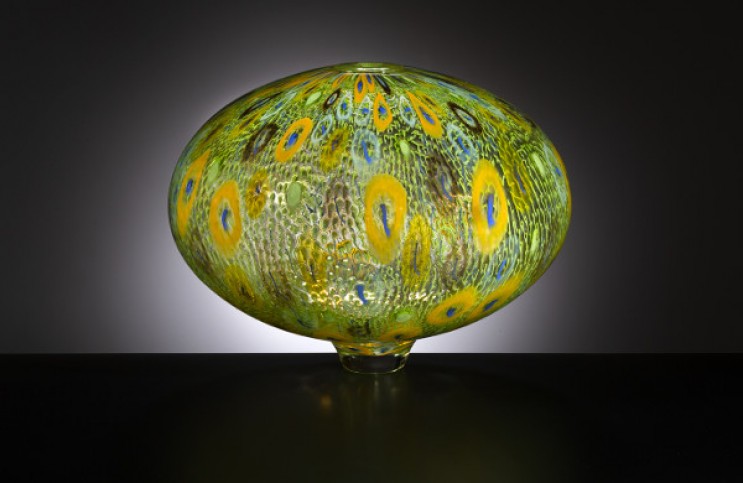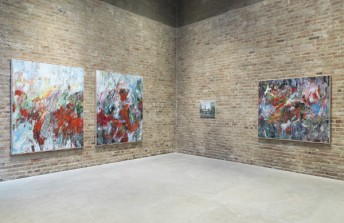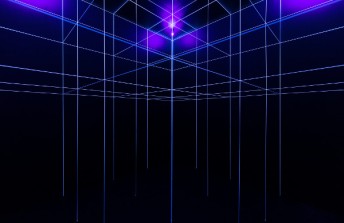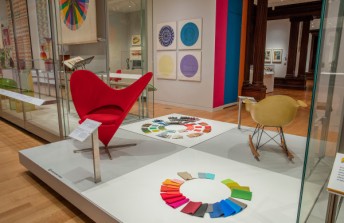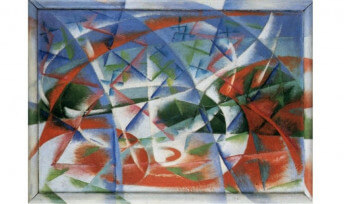Lino Tagliapietra, A Maestro of Glass
Jul 27, 2018
Abstract glass artist Lino Tagliapietra received the title of maestro when he was only 21 years old. Since it means “one who is distinguished,” it should not come as a surprise to find out that few people ever earn this designation, no matter what field they are in, let alone someone so young, and who is working with such a difficult medium. Glass is an extraordinary material. It is one of the most common industrial materials on the planet. Very thin glass of just 6mm can be soundproof and structurally sturdy enough for use in a skyscraper or the windows of an automobile. And yet glass is also incredibly fragile, both as a finished product and during the process of its manufacturing. Glass requires fire in order to exist, and yet fire can cause it to crack. The glass forms that Tagliapietra makes require a human touch in order to come into being, and yet too strong of a touch will destroy them in the blink of an eye. For Tagliapietra, whose name ironically means “stone cutter” in Italian, the contradictions and paradoxes of his medium are part of its beauty. They are also why when he earned the maestro label he saw it only as a beginning. Sure, he had mastered the science of how to bring a perfect glass object into existence. But what he wanted to learn about were the mysteries of glass. For more than six decades he has engaged in that search, dedicating his entire professional life not only to mastering the technical prowess of his art, but also to uncovering its hidden poetry. His work is subtle, and yet at times shocking in its grace. It has expanded the definition of what it means for an artist to work in the medium of glass today. And even now in his mid-80s, Tagliapietra continues to create objects and environments that expand our understanding of what glass is, and what it can do to push forward the world of contemporary abstract art.
The Maestro at Work
To truly understand Tagliapietra, it is not enough to simply go to one of his exhibitions. While his works are enchanting, just looking at them provides you with but one side of a much larger, and more dramatic story. To completely grasp the impact of what you are seeing, you must also watch the maestro at work. You must see how the materials accept his gestures and his movements, how the melted sand absorbs the grace of his body while simultaneously yielding to the roar of the fire. The final objects that he creates are but relics of this intense and unforgiving process. They are the leftover byproducts of a performance defined by impeccable technique and total confidence. During the process of creation is when Tagliapietra demonstrates his mastery over his materials, and his genius as an artist.
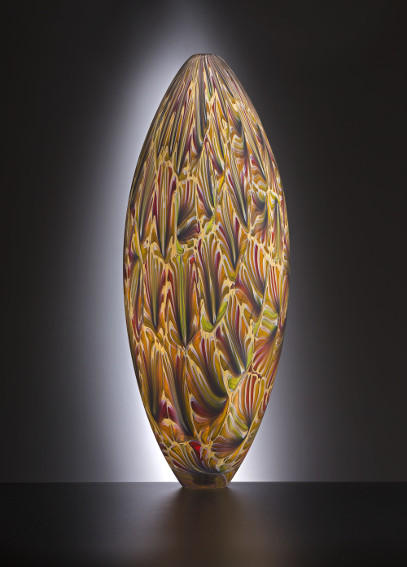
Lino Tagliapietra - Florencia, 2018. 23.99 x 8 x 8". © Lino Tagliapietra. Courtesy Schantz Galleries
What is perhaps most revealing is to watch Tagliapietra while he is at work on a series. For example, one long-running series involves lyrical, wing-like forms that hang from the ceiling. The translucent glass glows with color and fills the air with whimsical, gestural patterns. Each form echoes a familiar shape, yet is completely distinct. Watching him make these forms, we see the struggle in which he must engage to exert his will onto his medium and his tools. Each winged form is something that could never exist again, not precisely. Yet each is nonetheless each a manifestation of the same idea, and the same kind of action. It is like a sort of typology. As with German photographers Bernd and Hilla Becher, Tagliapietra makes a study of similar forms that speak to a certain type of recurring culmination between energy and matter. Except the Bechers, they were documenting what already exists. Tagliapietra is imagining what does not yet exist, and then bringing it into being.

Lino Tagliapietra - Celtica 2018. 13.75 x 20 x 20". © Lino Tagliapietra. Courtesy Schantz Galleries
Too Much Production
Something else you will come to understand when you watch the maestro at work in his glass studio is what Tagliapietra means when he says there is too much glass production being done today. It seems like an absurd comment from someone who has spent his entire life blowing glass, especially someone who has been as prolific as he has been. But he is not exactly referring to the amount of glass that exists. There is no end to how much glass art, or art of any kind, we could embrace, if only it was a product of real creativity, desire, and hard work. That is what Tagliapietra is saying. The production is the last thing that matters. What he believes should be the only important concerns for any artist are invention and technique.
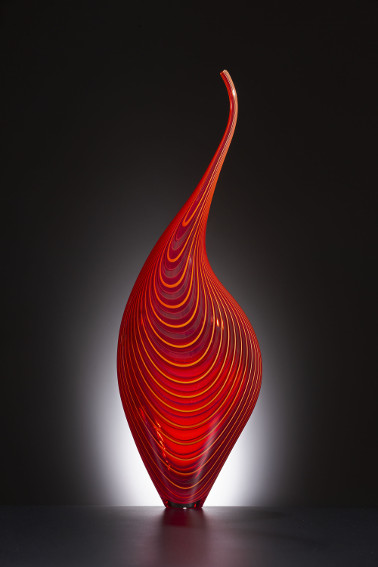
Lino Tagliapietra - Dinosaur, 2009. 20.25 x 5.75 x 4.5". © Lino Tagliapietra. Courtesy Schantz Galleries
What does it matter if an artist can learn what the masters of the past have done, or learn the science behind a complicated medium? That alone will not suffice if you are to call yourself an artist. For Tagliapietra, it is vital that artists must also learn how to invent something new. Artists must create, using both the imagination and science. Watching Tagliapietra at work, it might seem as though he is all imagination, as though he is improvising. Forms seem to come out of nowhere as he stretches, twirls, and massages the molten glass. But he has planned these forms meticulously. He has practiced each individual movement in order to predict the results. Practice and planning: this is where technique and creativity meet, and this is also what makes someone a maestro. If you would like to watch the master at work, or perhaps learn from him yourself, Lino Tagliapietra frequently demonstrates his technique and teaches workshops at various museums and galleries around the world. Meanwhile, his work is currently on view in Odyssey at Heller Gallery in New York City, through 17 August 2018.
Featured image: Lino Tagliapietra - Africa, 2013. 11 x 14.5 x 14.5". © Lino Tagliapietra. Courtesy Schantz Galleries
By Phillip Barcio
